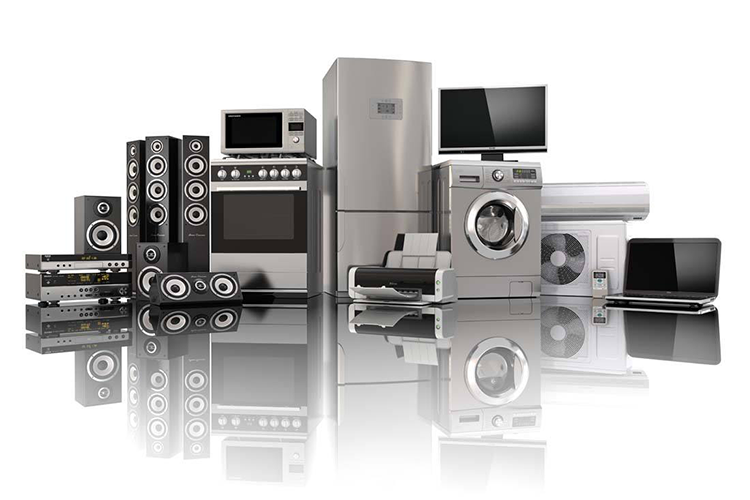
The EU RoHS, the "Restriction on the Use of Certain Hazardous Substances in Electrical and Electronic Equipment Directive", refers to reducing the risks to the environment and health caused by hazardous substances in electronic and electrical equipment (EEE).
The original directive 2002/95 / EC was implemented on July 1, 2006, covering eight categories of electrical and electronic equipment (EEE) with DC power at 1500V and AC power below 1000V. ) The content of lead (Pb), mercury (Hg), hexavalent chromium (Cr (VI)), polybrominated biphenyls (PBBs) and polybrominated diphenyl ethers (PBDEs) shall not exceed 1000 ppm, and the content of cadmium (Cd) shall not exceed 100 ppm.
RoHS 2.0 (2011/65 / EU) came into effect on July 21, 2011, and was officially implemented on January 3, 2013 (repealed on the same day as 2002/95 / EC).
Important changes in RoHS2.0
Incorporated into the CE mark requirements and become one of the EU CE mark directives. In addition to the above electrical and electronic products must comply with (LVD), electromagnetic compatibility (EMC), energy related products (ErP) and RoHS2.0 directive requirements, in order to paste the CE mark and issue compliance In addition to the sexual declaration, RoHS2.0 also requires the manufacturer to produce supporting technical documents and retain them for ten years.
The scope of management and control products was expanded by adding category 8 medical equipment and category 9 monitoring equipment, and adding category 11 other electrical and electronic equipment. In order to allow manufacturers newly included in ROHS 2.0 controlled products to have sufficient time to comply with the requirements of the directive, ROHS 2.0 sets a control transition period for related products.
Prioritize the selection of 4 toxic and hazardous substances (HBCDD, DEHP, DBP and BBP) as candidates for restricted substances, which may be included in the control in the future.
HBCDD HBCD 1000ppm
DEHP (2-ethylhexyl) phthalate 1000ppm
DBP dibutyl phthalate 1000ppm
BBP butyl benzyl phthalate 1000ppm
The new version of the EU RoHS Directive 2011/65 / EU was released on July 1, 2011. At present, the original six items (lead Pb, cadmium Cd, mercury Hg, hexavalent chromium CrVI, polybrominated biphenyl PBB, polybrominated diphenyl ether PBDE) are maintained; there are no additional four items mentioned in the industry (HBCDD, DEHP, DBP and BBP), but only priority Assessment.
As a directive very familiar to Chinese electrical and electronic product manufacturing enterprises, its introduction process can be described as twists and turns. Due to the great differences between the parties in the revision process, this amendment, which was originally intended to be introduced in 2009, has been delayed. In particular, there is a heated debate within the EU including the Commission, the European Parliament, the Council, the industry, and NGOs regarding whether to expand the range of products and restricted substances.
The main differences between 2011/65 / EU and the original RoHS directive are:
1. Expanded product range: Medical equipment and monitoring equipment were included in the scope of management and control, and in addition, the eleventh category of products that were not included in the previous ten electrical and electronic equipment was added. All electrical and electronic products are covered by the scope of the directive (including cables and spare parts), and certain requirements are set for Class 8 medical devices and Class 9 monitoring and control instruments (including industrial monitoring instruments) In the transition period, in addition, 20 exemptions are given for these two types of products (listed in Annex IV);
Expanded application schedule for electrical and electronic products regulations:
– Medical equipment and monitoring equipment on July 22, 2014
– July 22, 2016 in vitro diagnostic medical equipment
– July 22, 2017 Industrial monitoring equipment
– Electrical and electronic equipment not listed on it and the scope of application of the previous RoHS directive on July 22, 2019
2. The scope of controlled substances has not been expanded, and the original limit requirements for the six substances have been maintained, but it is proposed that in the future review process, substances including DEHP shall be subject to priority inspection to expand the control in the future The paving of the scope of the substance;
3. Manufacturers, importers and distributors have a clearer definition and further standardize their responsibilities. In addition, manufacturers and importers must continue to register EEE products that do not meet the requirements of the directive and recall, and pass relevant information to distributors. An authorized representative can be appointed to replace manufacturers outside the EU to perform relevant duties in compliance with CE marking and RoHS directives.
4. It stipulates that the product needs to be attached with the CE mark and CE mark related matters: before the EEE product is placed on the market, the manufacturer / importer / distributor must ensure that it has been evaluated for compliance with module A according to 768/2008 / EC Appendix The procedure has been evaluated and the CE mark must be affixed to the final product. The relevant technical documents and the declaration of conformity of the EU must be retained for at least 10 years.
This directive will take effect on the 20th day of the OJ. Member States need to translate it into national laws before January 2, 2013, that is, the new directive will be officially implemented on January 3, 2013, and the old directive 2002/95 / EC is also abolished.
The release of 2011/65 / EU will have a certain impact on China's electronic and electrical product manufacturing enterprises, especially because medical device products, monitoring and control instrument products are included in the scope of regulation, The impact will be very huge; in addition, because the CE mark needs to be attached to electronic and electrical products, it will also be a huge challenge for the industry to meet the requirements of the directive.





